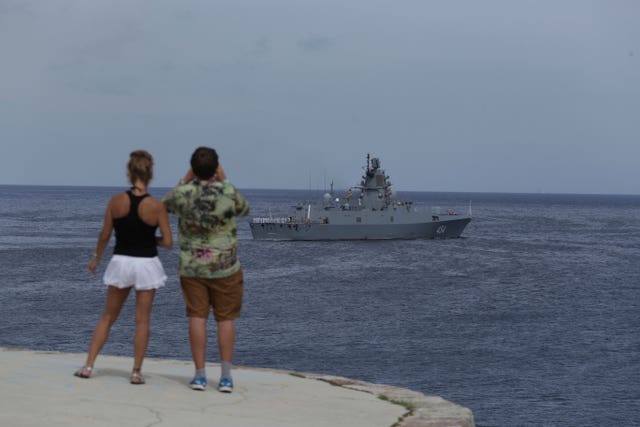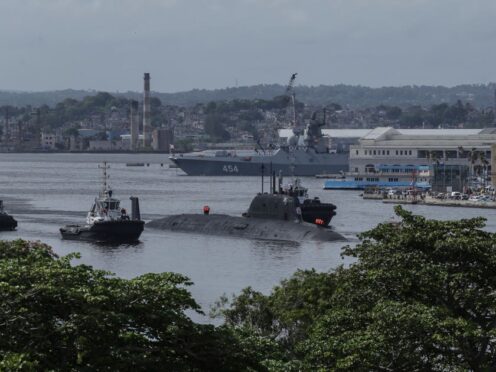A fleet of Russian warships, including a nuclear-powered submarine, has left Havana’s port after a five-day visit to Cuba following planned military drills in the Atlantic Ocean.
The exercise has been seen by some as a show of strength by Moscow against the backdrop of tensions as the US and other Western nations support Kyiv in Russia’s war on Ukraine.
The submarine, a frigate, an oil tanker and a rescue tug slowly departed from the port on Monday morning.
It is unclear what the fleet’s next destination is or where it will dock next in the Caribbean, although US officials said days ago that the vessels could possibly also stop in Venezuela.
Officials with the Biden administration said last week that they were monitoring the vessels and confirmed that they did not pose a threat to the region or indicate a transfer of missiles.

Still, the United States docked a submarine, the USS Helena, at its Guantanamo Bay Naval Base in Cuba.
The American naval base, located in the southeastern part of the island about 1,000 kilometres (625 miles) from the capital Havana, is considered by the Cuban government to be illegally occupied territory.
Last week, the Russian ships arrived at the port after the Russian Ministry of Defence reported that the fleet successfully conducted military drills in the Atlantic Ocean, simulating a missile attack on targets that could be more than 600 kilometres (375 miles) away.
The fleet, made up of the frigate Gorshkov, the nuclear-powered submarine Kazan, the tanker Pashin, and the tug Nikolai Chiker, was received in Havana with a 21-gun salute.
Cuban President Miguel Diaz-Canel visited the frigate on Saturday and interacted with the sailors, according to a post by the president on the social media platform X, formerly Twitter.
Meanwhile, Cuban deputy foreign minister Carlos Fernandez de Cossio rejected the presence of the American submarine at Guantanamo Base, saying it was unwelcome and uninvited.
A State Department spokesperson said last week that Russia’s port calls in Cuba are “routine naval visits” and do not pose any danger.
On Thursday, a day after arriving, hundreds of people lined up to visit the frigate.
The ship was also open to the public on Saturday, which is a common practice when vessels arrive at the port.
Canada’s navy patrol boat Margaret Brooke entered the Havana harbour on Friday.
